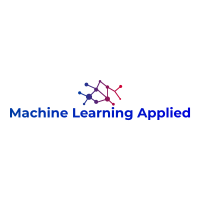Quantocracy: This is a curated mashup of quantitative trading links.
Financial Machine Learning – Bryan T. Kelly, Dacheng Xiu
We survey the nascent literature on machine learning in the study of financial markets. We highlight the best examples of what this line of research has to offer and recommend promising directions for future research. This survey is designed for both financial economists interested in grasping machine learning tools, as well as for statisticians and machine learners seeking interesting financial contexts where advanced methods may be deployed.
Deep Unsupervised Anomaly Detection in High-Frequency Markets – Cédric Poutré, Didier Chételat, Manuel Morales
Inspired by recent advances in the deep learning literature, this article introduces a novel hybrid anomaly detection framework specifically designed for limit order book (LOB) data. A modified Transformer autoencoder architecture is proposed to learn rich temporal LOB subsequence representations, which eases the separability of normal and fraudulent time series. A dissimilarity function is then learned in the representation space to characterize normal LOB behavior, enabling the detection of any anomalous subsequences out-of-sample. We also develop a complete trade–based manipulation simulation methodology able to generate a variety of scenarios derived from actual trade–based fraud cases. The complete framework is tested on LOB data of five NASDAQ stocks in which we randomly insert synthetic quote stuffing, layering, and pump-and-dump manipulations. We show that the proposed asset–independent approach achieves new state-of-the-art fraud detection performance, without requiring any prior knowledge of manipulation patterns.
An Optimal Control Strategy for Execution of Large Stock Orders Using Long Short-Term Memory Networks – Andrew Papanicolaou, Hao Fu, Prasanth Krishnamurthy, Brian Healy, Farshad Khorrami
In this paper, we simulate the execution of a large stock order with real data and general power law in the Almgren and Chriss model. The example that we consider is the liquidation of a large position executed over the course of a single trading day in a limit order book. Transaction costs are incurred because large orders walk the order book, that is, they consume order book liquidity beyond the best bid/ask. We model the order book with a power law that is proportional to trading volume, and thus transaction costs are inversely proportional to a power of trading volume. We obtain a policy approximation by training a long short term memory (LSTM) neural network to minimize transaction costs accumulated when execution is carried out as a sequence of smaller suborders. Using historical S&P100 price and volume data, we evaluate our LSTM strategy relative to strategies based on time-weighted average price (TWAP) and volume-weighted average price (VWAP). For execution of a single stock, the input to the LSTM is the cross section of data on all 100 stocks, including prices, volumes, TWAPs and VWAPs. By using this data cross section, the LSTM should be able to exploit inter-stock co-dependence in volume and price movements, thereby reducing transaction costs for the day. Our tests on S&P100 data demonstrate that in fact this is so, as our LSTM strategy consistently outperforms TWAP and VWAP-based strategies.
Model Selection via Automated Machine Learning – Yuhan Cheng, Guofu Zhou, Yingzi Zhu
Automated machine learning extends the search space to include hyperparameters and algorithm selection. We apply automated machine learning (AutoML) to cross sectional stock return prediction with factors. We formulate factor dimension reduction and hyperparameter tuning in conventional ML method as the model selection problem. we show that the optimal model improves the out-of-sample performance upon all the machine learning method implemented alone. The investment strategies generated by AutoML demonstrate significant improvements in terms of Sharpe ratio and Alpha. In addition, AutoML outperforms ensemble models. Compared to traditional machine learning, automated machine learning optimizes model parameters and chooses function forms within different families of machine learning models, providing a better fit for time-varying pricing rules.
Portfolio Optimization: A Comparative Study – Jaydip Sen, Subhasis Dasgupta
Portfolio optimization has been an area that has attracted considerable attention from the financial research community. Designing a profitable portfolio is a challenging task involving precise forecasting of future stock returns and risks. This chapter presents a comparative study of three portfolio design approaches, the mean-variance portfolio (MVP), hierarchical risk parity (HRP)-based portfolio, and autoencoder-based portfolio. These three approaches to portfolio design are applied to the historical prices of stocks chosen from ten thematic sectors listed on the National Stock Exchange (NSE) of India. The portfolios are designed using the stock price data from January 1, 2018, to December 31, 2021, and their performances are tested on the out-of-sample data from January 1, 2022, to December 31, 2022. Extensive results are analyzed on the performance of the portfolios. It is observed that the performance of the MVP portfolio is the best on the out-of-sample data for the risk-adjusted returns. However, the autoencoder portfolios outperformed their counterparts on annual returns.
This is the preprint of the book chapter accepted for publication in the book titled “Deep Learning – Recent Finding and Researches” edited by Manuel Domínguez-Morales. The book is scheduled to be be published by IntechOpen, London, UK in January 2024.
Deep Inception Networks: A General End-to-End Framework for Multi-asset Quantitative Strategies – Tom Liu, Stephen Roberts, Stefan Zohren
We introduce Deep Inception Networks (DINs), a family of Deep Learning models that provide a general framework for end-to-end systematic trading strategies. DINs extract time series (TS) and cross sectional (CS) features directly from daily price returns. This removes the need for handcrafted features, and allows the model to learn from TS and CS information simultaneously. DINs benefit from a fully data-driven approach to feature extraction, whilst avoiding overfitting. Extending prior work on Deep Momentum Networks, DIN models directly output position sizes that optimise Sharpe ratio, but for the entire portfolio instead of individual assets. We propose a novel loss term to balance turnover regularisation against increased systemic risk from high correlation to the overall market. Using futures data, we show that DIN models outperform traditional TS and CS benchmarks, are robust to a range of transaction costs and perform consistently across random seeds. To balance the general nature of DIN models, we provide examples of how attention and Variable Selection Networks can aid the interpretability of investment decisions. These model-specific methods are particularly useful when the dimensionality of the input is high and variable importance fluctuates dynamically over time. Finally, we compare the performance of DIN models on other asset classes, and show how the space of potential features can be customised.
Real-time Trading System based on Selections of Potentially Profitable, Uncorrelated, and Balanced Stocks by NP-hard Combinatorial Optimization – Kosuke Tatsumura, Ryo Hidaka, Jun Nakayama, Tomoya Kashimata, Masaya Yamasaki
Financial portfolio construction problems are often formulated as quadratic and discrete (combinatorial) optimization that belong to the nondeterministic polynomial time (NP)-hard class in computational complexity theory. Ising machines are hardware devices that work in quantum-mechanical/quantum-inspired principles for quickly solving NP-hard optimization problems, which potentially enable making trading decisions based on NP-hard optimization in the time constraints for high-speed trading strategies. Here we report a real-time stock trading system that determines long(buying)/short(selling) positions through NP-hard portfolio optimization for improving the Sharpe ratio using an embedded Ising machine based on a quantum-inspired algorithm called simulated bifurcation. The Ising machine selects a balanced (delta-neutral) group of stocks from an N-stock universe according to an objective function involving maximizing instantaneous expected returns defined as deviations from volume-weighted average prices and minimizing the summation of statistical correlation factors (for diversification). It has been demonstrated in the Tokyo Stock Exchange that the trading strategy based on NP-hard portfolio optimization for N=128 is executable with the FPGA (field-programmable gate array)-based trading system with a response latency of 164 μs.



